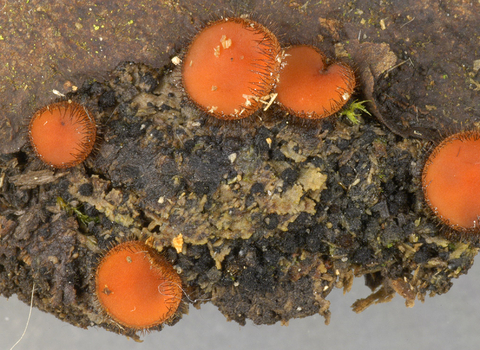
Common eyelash fungus ©Dr Malcolm Storey
Common eyelash fungus
The diminutive common eyelash fungus can be found on wet wood and humous-rich damp soil, often by streams or in wet places. Its orange cup is fringed with tiny, black hairs, providing its common name.
